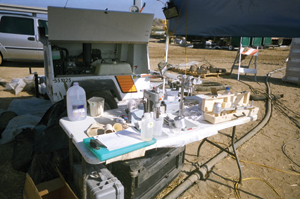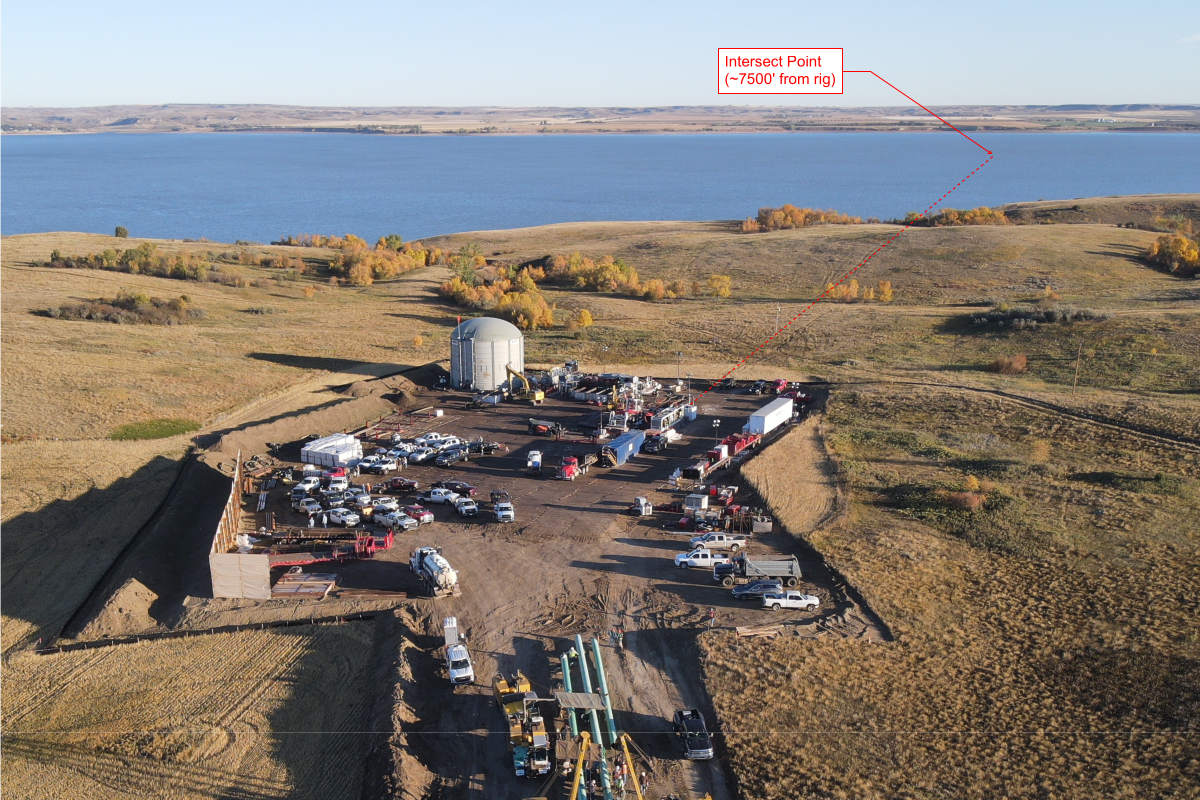Selecting a Mud Engineer:

A contractor is on the pre-qualified list to bid a project. Before the bid, he contacts a mud engineer for consultation. The geo-technical information is forwarded to and examined by the mud engineer. Together, the contractor and mud engineer put together a drilling fluids plan. The plan encompasses the entire job from rig selection, cleaning equipment, pumps, ream passes, fluid properties and pump volume targets. This plan is specific to the contractor and the proposed work.
Drilling fluid selection criteria is based upon rheological properties of the mud instead of products. The desired properties of the drilling mud — viscosity, fluid loss, gel strengths, yield point, plastic viscosity, density and sand content — are geared to the expected soil conditions. Calculations are made regarding volumes of fluid required for the project and the amounts of products needed to build the volume. Desired rheological characteristics are used in the calculations. This allows the contractor to have a firm handle on fluid costs and equipment selection for the bid.
Often, the impartial view of the mud engineer has an impact on the equipment selected. Sometimes smaller drill rigs can successfully be used to complete jobs usually done by much larger rigs, when the hole is properly developed and cared for. Schedule — an important part of any job — is reviewed by the mud engineer who has substantial field experience. He or she does not dictate anything but gives an important viewpoint for consideration. Excessive optimism, while a good character trait, does not always fit a large HDD project.
Once they are awarded the contract, another phase of work begins. Timelines and proposed scheduling drive mobilization, rigging up, drilling, reaming, pullback, rigging down and de-mobilization. An effective mud engineer will work with the project manager to set up a delivery schedule for the bentonite and polymers selected. The planned delivery schedule must be flexible and account for problems with logistics often encountered (border crossing, barging, remote location etc.). This minimizes downtime and keeps rush transportation costs to a minimum.
During the rig up, it is a great time for the mud engineer to inspect the recycling plant. Screen sizes and availability are noted, along with general observations about the recycling plant. The working knowledge of the plant allows anticipation of future problems and formulation of appropriate contingency plans. After mud up, the mud engineer performs a check on the virgin fluid. This allows a baseline to be established. A typical mud check consists of recording the Marsh Funnel viscosity, density using a mud balance, pH using test strips, hardness and chlorides using titrates, fluid loss using a filter press, 600 and 300 reading from a calibrated viscometer, yield point and plastic viscosity using the 600 and 300 readings, 10 second and 10 minute gels using a viscometer and finally sand content using a sand content kit. The values are recorded in a form useful for both the contractor and engineer.
After establishing the baseline, mud samples are checked once per hour. Sampling from the same locations provides consistent data. Cleaned fluid from the recycler and returns from the hole are tested on alternate hours. Should an area of concern or problem develop, constant monitoring between the hourly tests assist in evaluating both the cause and the solution. The hourly tests must be maintained when possible. The finished mud report is given to the project superintendent and anyone else the contractor specifies at the end of each shift. Keeping a copy of all the previous mud reports allows the mud engineer to observe previous trends and assists in predicting future developments of the drilling fluids.
Once drilling begins, the mud engineer can also assist in training the person working the recycling plant. Often it seems that inexperienced people are in charge of operating the recycling plant; assisting them with training is beneficial to the mud engineer, the contractor and the project. They can also run some of the simple tests in order to solve a problem.
Mud data is useful for things other than building and maintaining drilling fluid. As an example, if we found that the sand content on the clean fluid had been under .75 percent and it suddenly rises to 5 percent while maintaining similar characteristics of the returns, it is safe to assume we have a mechanical issue with the recycling plant. A quick check of the screens to look for a hole or pass through would be appropriate. The problem can be fixed quickly without interruption of the drilling process and loss of time.
Not fixing or knowing about the problem will lead to other problems. We start to pump more and more sand through the high-pressure pump and induce wear. We decrease the ability of the clean fluid to efficiently suspend and carry out the drilled solids. The hole is not developed properly and we risk an increase in rotary torque or drag on the drill string. As mud weight increases, the efficiency of our recycling plant will decrease unless compensations are made. This small, preventable problem cascades into a major one with significant costs attached.
Comparative data from the report gives us a snapshot about how well we are cleaning the hole during drilling and ream passes. If the yp/pv ratio is out of range and the density and sand content are high, we can slow down or increase the pump rate. The changes are made before it becomes a significant issue. Decisions about the hole are made on good scientific information. If we are drilling sand or gravel, fluid loss becomes important. Keeping the fluid loss within an acceptable range will stop us from water wetting the formation and decreasing the annular space available to flow out drilled solids.
These are just a few examples. Every single fluid characteristic described above can have an impact on your job. The craftsman you select as your mud engineer is very valuable in manipulating and controlling the relevant characteristics.
What about costs? Most of the mud engineers do charge a day rate. Prudent contractors will have an open dialogue with their chosen mud engineer. Ask questions about issues that are not clear. Challenge the use of expensive polymers and drilling systems. If they are required, your engineer will be able to justify their use. Successful completion of the project, in a cost-effective manor, should be a priority for all parties involved. Contrast this to the what ever it costs attitude when you are stuck. Meeting or beating schedule and reducing downtime also compensate for the cost incurred. Overall, the professional mud engineer will more than pay for himself. There is no substitute for horsepower but running an efficient operation with smaller equipment can allow us to be more competitive in this environment of low dollar footage.
Rick Zavitz is technical sales engineer for Wyo-Ben, which is based in Billings, Mont.




